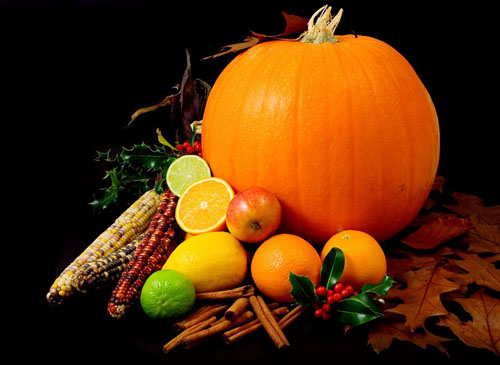Composition is a critical element of still-life work. The subjects themselves may be ordinary everyday items but the photographer must ensure that the various forms, colours and textures are arranged in an interesting and engaging manner. It is up to a photographer to find the creativity, visualize an image and create an appropriate setup and lighting. Bowls of colouful fruit are an obvious first choice, but don't be limited to such well-used ideas. The most unlikely everyday items can be used to create stunning images given a good set-up and creative lighting. Try combining items that might not normally be seen together, and position them in a simple setting with a nondescript background and high-contrast lighting that gives depth and highlights texture. Use items of different sizes, colours and textures to give variety and add interest, and avoid highly reflective surfaces such as glass and metal until your skill increases. Such items are difficult to light successfully. Keep re-arranging your chosen items until a balanced image emerges.
 |
| Public domain image |
Try fruit of course, but also consider food, flowers, wine glasses, vegetables, elegant jewellery, semi-precious stones, pattern, wooden objects featuring beautiful shapes and surfaces, and simple items placed on a mirror surface. All subjects present their own challenges. If you are stuck for an idea, pass a pleasant day walking an art gallery that features work by the great still-life painters such as Cézanne, Oosterwyck, Van Gogh and Harnett. Observe how they produced magical vibrant works using the simplest of items and good light. Light and colour are always key ingredients.
Another approach to finding subjects is to do exactly that! Go looking is suitable areas such as markets, second-hand shops, deserted industrial sites etc for unlikely objects. An odd-shaped piece of rusting metal, an old abandoned tool or anything else that catches the eye can form the basis of an excellent image. The simplest objects in equally simple settings often make great images. When you get your found object home, be prepared to spend some time looking at it from every conceivable angle and in all sorts of light and locations. re-arrange the background, alter the direction and contrast of the light and move the camera around until the makings of a picture appear in the viewfinder. Then spend some more hours making minor changes and adjustments until the object almost jumps our of the scene.
A further approach involves choosing a concept or idea, such as love, age or decay, and find a way to portray your thoughts visually. Spend some time in an evening thinking about your own personal interpretation of the chosen concept, and look for objects that might be used to represent your ideas. This process can be challenging in itself, even before you set up a camera. Try to tell something of a story in a single image. It can be done, so don't give up if nothing springs to mind immediately.
The internet is of course a source of all sorts of ideas, but don't just copy what has already been well done. Copying an idea is tolerable as a way of learning to set up scenes and lighting, but in the longer term it is important to use your own interest, ideas and imagination.






